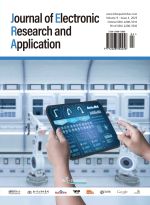Principles and Optimization of Wireless Energy Transmission Technology
Abstract
Wireless energy transmission technology through the transmitter will be converted into microwave, laser or electromagnetic field and other energy carriers to realize the transmission of space, and the receiver will be captured back to the energy conversion of electrical energy, the whole process can be completed without physical contact energy transfer. The core mechanism is to build the energy coupling channel of the transmitter-receiver system, and realize the spatial power transmission through electromagnetic field interaction. In the electromagnetic induction coupled transmission system, the industrial frequency alternating current is converted into direct current by rectification and filtering, and then converted into high-frequency alternating current by high-frequency inverter. This current excites the primary side transmitting winding to generate a time-varying magnetic field, and through magnetic coupling in the secondary side receiving winding inductance electromotive force, and ultimately through the high-frequency rectifier and power regulation circuit to the load power supply. The essence of the process is to establish a transceiver double-ended resonant network, through the magnetic field resonance to achieve efficient energy exchange, and its transmission characteristics follow the laws of electromagnetic induction and the circuit resonance principle of double constraints.
References
Stewart W2007Science31755.
Kurs A, et al., 2007, Wireless Power Transfer via Strongly Coupled Magnetic Resonances. Science, 317(5834): 83–86.
Zhong WX, et al., 2013, A Comparative Study of Inductive and Resonant Coupling for WPT. IEEE Trans. Power Electron., 28(8): 4500–4511.
Hui SYR, et al., 2014, A Critical Review of Recent Progress in Mid-Range Wireless Power Transfer. IEEE Transactions on Power Electronics, 29(9): 4500–4511.
Zhao Q, et al., 2016, Research Progress of Magnetically Coupled Resonant Wireless Energy Transmission Technology. Chinese Journal of Electrical Engineering, 36(1): 1–13.
Li S, et al., 2020, Dynamic Impedance Matching for Misalignment-Tolerant WPT Systems. IEEE Trans. Ind. Electron., 67(6): 5123–5132.
Wang B, et al., 2018, Metamaterial-Enhanced Wireless Power Transfer: Efficiency Improvement and Range Extension. Nature Communications, 9(1): 1–9.
Zhang Y, et al., 2022, AI-Driven Frequency Tracking in Resonant WPT Systems. IEEE Trans. Microw. Theory Tech., 70(3): 1782–1794.
Sample AP, et al., 2011, Design of an RFID-Based Battery-Free Programmable Sensing Platform. IEEE Transactions on Instrumentation and Measurement, 60(8): 3140–3148.
Cannon BL, et al., 2009, Magnetic Resonant Coupling as a Potential Means for Wireless Power Transfer to Multiple Small Receivers. IEEE Transactions on Power Electronics, 24(7): 1819–1825.
Kurs A, et al., 2010, Simultaneous Mid-Range Power Transfer to Multiple Devices. Applied Physics Letters, 96(4): 044102.
Waters BH, et al., 2015, Power Delivery and Leakage Field Control Using an Adaptive Phased Array Wireless Power System. IEEE Transactions on Power Electronics, 30(11): 6298–6309.
Kim J, et al., 2016, Coil Design and Shielding Methods for Minimizing the Electromagnetic Field in Wireless Power Transfer Systems for Electric Vehicles. IEEE Transactions on Electromagnetic Compatibility, 58(6): 1727–1735.
Lu X, et al., 2015, Wireless Charging Technologies: Fundamentals, Standards, and Network Applications. IEEE Communications Surveys & Tutorials, 18(2): 1413–1452.
Muhammad S, et al., 2020, A Comprehensive Review of Wireless Charging Technologies for Electric Vehicles. Renewable and Sustainable Energy Reviews, 13: 110064.

